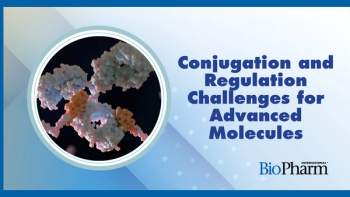
- BioPharm International-07-01-2013
- Volume 26
- Issue 7
EU Battles Medicine Shortages
European governments are under pressure to take regulatory action, but solving the problem of medicine shortages is not as straightforward as it seems.
Healthcare professionals, NGOs and politicians have been stepping up the pressure for regulatory action on the worsening problem of medicine shortages across Europe. However, drawing up and implementing regulations at both national and EU levels appear to be far more convoluted than expected. Not only are there differences among the EU governments about what needs to be done, but such differences also exist within the industry and the pharmaceutical supply chain.
Sean Milmo
Although it is generally acknowledged that drug shortages are causing problems to health services throughout Europe, some groups tend to be more outspoken about the issue than others. At a meeting at the European Parliament in Brussels in mid-May, three European pharmacists associations called for urgent action by governments and national regulators to tackle shortages. "With evidence strongly suggesting the problem is becoming worse, doing nothing is no longer an option," said Roberto Frontini, president of the European Association of Hospital Pharmacists (EAHP).
A recent pan-European survey by the EAHP revealed that 99% of hospital pharmacists had experienced medicine shortages in the past year while 63% reported them to be a weekly, and sometimes daily, occurrence. Among the causes of shortages listed by the pharmacists were fewer manufacturing sites in Europe, globalization and extended supply lines due to outsourcing and low levels of contingency stocks because of financial pressures stemming from low generic-drug prices. The Pharmacy Group of the European Union (PGEU), representing more than 400,000 community pharmacists, has suggested that manufacturers and wholesalers be legally obliged to maintain minimum national stocks of certain medicines.
REGULATORY MEASURES
Demands for tougher regulatory measures are likely to intensify if July's implementation of tighter controls on GMP standards of imported APIs triggers more shortages, as is being predicted. The controls, targeting APIs produced mainly in Asia, are being introduced under the EU's new Falsified Medicines Directive (FMD), which stipulates that from July 2, all imported APIs must be accompanied by a written confirmation from the relevant regulatory authority of the exporting country that they comply with GMP standards equivalent to those in force in the EU. "The otherwise welcome FMD may unintentionally increase the experience of medicines shortages because of the new conditions placed on the import of APIs," said Luigi Martini, immediate past president of the European Industrial Pharmacists Group (EIPG) at the May European Parliament meeting.
Partly in response to worries about the possible impact of the stricter checks on API imports, the European Medicines Agency (EMA) set out late last year a series of proposed steps for dealing with shortages caused by manufacturing difficulties, including GMP compliance. Some of these initiatives have already been carried out or are close to being completed, including the drawing up of a catalogue of centrally approved products (CAPs) authorised by EMA, which have previously been subject to shortages. A similar exercise is being conducted at the EU state level with nationally authorized drugs (non-CAPs).
On the issue of new controls on imported APIs, EMA is currently establishing a list of non-EU countries for which the requirement of written confirmation from the national regulatory authority on equivalent GMP standards can be waived. In the absence of a written confirmation from an API exporter, the EU may have to perform its own GMP inspections of the exporter's production site.
"To avoid potential shortages of medicines, the agency has developed a risk-ranking methodology for centrally authorized medicines, which can be used to prioritize inspections of active-substance manufacturers in third countries," an EMA official told BioPharm International. "This methodology is applicable to centralized products and has been shared with member states that can use it or adapt it to their specific situations."
On other specific measures for dealing with medicine shortages, EMA has been trying to thrash out a consensus among a broad range of stakeholders. On June 5, the agency held a meeting with representatives of healthcare professionals and patients on what should be the priorities. Sharp divisions on what needs to be done have been already evident within many of the EU's 28 member states on aspects like categorizing essential medicines and what should be the responsibilities of manufacturers and wholesalers in providing information on medicines availability. These differences are now beginning to appear at the EU level, particularly on issues such as what are essential medicines.
In Germany, doctors' organizations have been urging the use of the category of "short-term indispensible" medicines for which there is no equivalent alternative. "We are not supporting the concepts of 'essential' or 'short-term indispensible' medicines being implemented on a national or on an EU level," says Dr Siegfried Throm, R&D and innovation director at the German Association of Research-based Pharmaceutical Companies (VfA). The concept cannot be applied to many patients with illnesses that cannot be treated "by a limited set of drugs," Throm stated to BioPharm International.
Germany is among the several EU countries that have national working groups of representatives of industry, wholesalers, pharmacists and other supply-chain players who share voluntary information on shortages. In some states, healthcare professionals are suggesting that the provision of information should be made mandatory. Under EU legislation, manufacturers have to provide information on plant closures and temporary shutdowns as part of their legal responsibility to ensure adequate supplies of certain pharmaceuticals. Some stakeholders, however, want a requirement for a broader range of information, which might be extended to information on difficulties with raw-material supplies.
"There is an overall lack of information for supply-chain actors about the causes and possible duration of shortages," says John Chave, PGEU secretary general. "It is time for manufacturers, wholesalers and pharmacists to get together with the regulators in Europe and at the very least try to improve the flow of information," Chave told BioPharm International.
PARALLEL TRADING
Some manufacturer groups are emphasizing that the main reasons for shortages are not so much because of manufacturing failures but due to inadequacies in the supply chain, especially at the wholesaling and retailing stages. They point to the variety of reimbursement systems among EU states that has led to big differences in medicine prices between countries. These disparities are heightened by fluctuations in exchange rates between the eurozone of 17 countries and other EU states with their own currencies, such as the pound in the UK, which is one of the few large EU pharmaceutical markets outside the euro area.
These gaps between national prices has triggered a considerable amount of parallel trading in medicines with products manufactured to serve the needs of a country with low prices being diverted by wholesalers, many of them pharmacists with small short-line wholesaling businesses, to EU countries with higher prices. In the UK, an EU country with a high level of parallel trading, an estimated 10–15% of the country's 12,500 community pharmacists are using wholesale dealer licences (WDL) to export medicines to other EU states.
"Parallel trading by pharmacists with wholesale dealer licences is the main cause of current shortages of branded medicines in the UK, not manufacturing problems," explains Sam Ogden, a supply-chain specialist at the Association of the British Pharmaceutical Industry (ABPI), London, to BioPharm International.
"UK medicine prices are, at the moment, among the lowest in Europe so there is a big incentive for pharmacist wholesalers to divert medicines supplied to them for dispensing purposes to other European countries with higher prices."
Parallel trading is legal in the EU because the right to benefit from the free movement of goods underpins the Union's single internal market. As a result of it, the ABPI claims that manufacturers oversupply the UK market with their branded medicines by an average of 120–130%. Ironically, this excess supports the case put forward by the parallel traders that their activities are helping channel surplus supplies to countries with scarcities of medicines. Disagreement between different groups about issues like parallel trading merely highlights the complexities of sorting out the EU's problems with medicine shortages.
Sean Milmo is a freelance writer based in Essex, UK,
Articles in this issue
over 12 years ago
The Pains of Changeover 12 years ago
QbD and PAT in Upstream and Downstream Processingover 12 years ago
Outsourced Training: A Primerover 12 years ago
Report from Brazilover 12 years ago
What Happened to Outsourcing in Asia?over 12 years ago
Essentials in Stability Analysis and Expiry Determinationover 12 years ago
Kinetic Analysis of Antibodies from Different Cultured Mediaover 12 years ago
FDA Urges Greater Focus on Contractor Qualityover 12 years ago
IPO Market Heats Up for Life-Sciences CompaniesNewsletter
Stay at the forefront of biopharmaceutical innovation—subscribe to BioPharm International for expert insights on drug development, manufacturing, compliance, and more.




